East Coast Supply Project - Wells Connection Environment Plan
The East Coast Supply Project (ECSP) intends to help meet East Coast domestic gas demand by developing subsea gas reserves to replace existing wells as they run out. Imported alternatives cost significantly more and cause much higher emissions. Under the ECSP—Wells Connection Environment Plan, production wells will be tied into our existing subsea pipeline to allow hydrocarbons to be transported to our Athena Gas plant.
Update log
- March 2025: Page created
Location
Adjacent to the Athena gas plant, Otway Basin, 9km offshore Peterborough and Port Campbell, Victoria.
Offshore Eastern Maar Sea Country.
Call for comments
We are preparing the ECSP - Wells Connection Environment Plan. If you think your functions, interests or activities may be affected, we would like to hear from you.
Community sessions
Community sessions and online webinars are being planned. This site will be updated when dates are confirmed.
| Drop-in sessions and webinars | Dates and times |
Drop-in sessions No bookings required | 10:00am to 12:00pm 1:00pm to 3:30pm 5:00pm to 7:00pm |
Portland – Quest Portland 66 Julia St, Portland 305 | Wednesday 4 June 2025 |
Warrnambool- Surf Life Saving Club 76 Pertobe Rd, Warrnambool VIC 3280 | Thursday 5 June 2025 |
Peterborough Golf Club 20 Schomberg Rd, Peterborough VIC 3270 | Friday 6 June 2025 |
| Online webinars: please register via stakeholder@cooperenergy.com.au | |
| Register by 4:00pm EST Friday 23 May 2025 | Tuesday 27 May 2025 5:00pm EST |
| Register by 4:00pm EST Monday 26 May 2025 | Thursday 29 May 2025 5:00pm EST |
| Register by 4:00pm EST Friday 6 June 2025 | Monday 9 June 2025 5:00pm EST Tuesday 10 June 2025 5:00pm EST |
Activity details
We plan to:
- Modify existing subsea equipment
- Install flowlines and umbilicals
- Test and commission the system
- Operate vessels
- Undertake inspection, maintenance and repair of the flowlines and / or umbilicals
- Survey the seabed
Distance from shore
Approximately 9km from shore at the closest point.
Permit areas
- VIC/L24
- VIC/P76
- VIC/P44
- VIC/L30
Water depth
Approximately 55 to 80 metres
Supply base
Portland
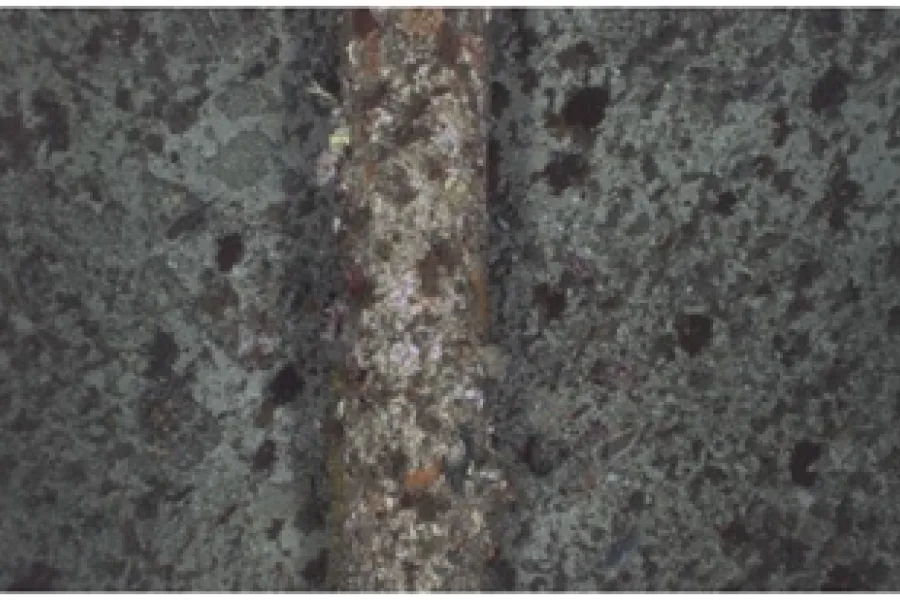
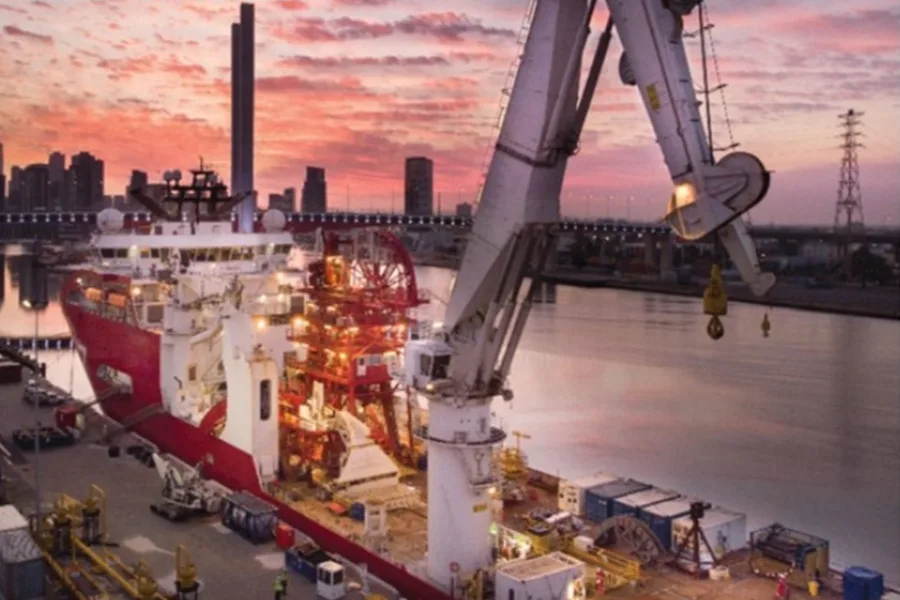
Summary of Impacts, Risks and Activities
Information sheet regarding impacts, risks and control measures.
Timeline
Wells connection: The expected duration for activities is ~120 days. Installation activity window is 2027 - 2030.
IMR and survey: The expected duration is ~60 days per campaign. Window is 2027 - 2030.
Identified impacts and risks
By interest group
If you have concerns about how these may affect your functions, interests or activities, please contact us.
Find out about risks and impacts that may affect you.
Interaction with Other Marine Users
Our proposed activities offshore that may result in interaction with other marine users include:
- Vessel operations including safety exclusion zones
- Petroleum Safety Zone around equipment (if needed)
Impact
- Change to the functions, interests and activities of other marine users.
Controls
To mitigate or reduce the impacts and risks of our activities we will:
- Implement a Marine Assurance Process (e.g. comply with AMSA Marine Orders)I
- Communicate exclusion zones around vessels via Notice to Mariners
- Gazette any PSZ around equipment where required for equipment integrity management
- Mark subsea infrastructure on navigational charts for awareness
- Implement a Fisheries Damages Protocol
- Undertake ongoing engagement including notification of third party stakeholders
Seabed disturbance
Our proposed activities offshore that may result in seabed disturbance include:
- Installation of flowline and umbilical systems on the seabed
- Post-lay works and commissioning (discharges)
- Possible anchor placement for our operating vessels in bad weather
- ‘Flying’ our ROV (remotely operated vehicle) close to seabed
Impact
- Change in benthic habitat (sediments at the bottom of ocean).
Risks
Include possible:
- Marine fauna injury or mortality
- Cultural heritage changes.
Controls
To mitigate or reduce the impacts and risks of our activities we will:
- Use available seabed survey data to identify and avoid sensitive benthic features and potential underwater cultural heritage
- Implement Offshore Operational Procedures
- Implement an Underwater Cultural Heritage Disturbance Risk Management Process
Underwater sound
Our proposed activities offshore that may result in changes to underwater sound include:
- Operation of offshore vessels
Impact
- Change in ambient sound
Risks
- Change in fauna behaviour
Controls
To mitigate or reduce the impacts and risks of our activities we will implement:
- Marine Assurance Processes e.g. planned maintenance of power systems
- Offshore Operational Procedures e.g. helicopter and vessel distances around cetacean
- Offshore Whale Disturbance Risk Management Process to ensure our activities are not inconsistent with relevant EPBC species recovery plans
Greenhouse gas emissions
Our proposed activities offshore that may result in GHG emissions include:
- Vessel operations
Impact
- An increase in GHG emissions
Risks
- Change in climate and marine systems
- Change in ecosystems
- Change in socio-economic factors
Controls
To mitigate or reduce the impacts and risks of our activities we will implement:
- Marine Assurance Process (e.g. vessel AMSA marine order compliance)
- Emissions Management Process (e.g. identify, assess and implement emissions reduction opportunities)
Light emissions
Our proposed activities offshore that may result in light emissions include:
- Vessel operations
Impact
- Change in ambient light
Risks
- Change in fauna behaviour
Controls
To mitigate or reduce the impacts and risks of our activities we will:
- Conduct a pre-campaign risk review for light
- Implement Marine Assurance Process (e.g. comply with Marine Order 30)
- Implement Light Management Measures (e.g. Vessel non-essential light positioning)
Other atmospheric emissions
Our proposed activities offshore that may result in Atmospheric Emissions include:
- Vessel operations
- Helicopter operations
- Installation and commissioning of flowlines
Impact
- Change in air quality
Controls
To mitigate or reduce the impacts and risks of our activities we will:
- Implement a Marine Assurance Process for vessels
Planned discharges
Our proposed activities offshore that may result in planned discharges include:
- Vessel operations
- Installation of subsea structures
- Maintenance and repair
Impact
- Change in water quality and change in sediment quality.
Risks
- Injury / mortality to marine fauna.
Controls
To mitigate or reduce the impacts and risks of our activities we will:
- Implement a Marine Assurance Process
- Implement an Offshore Chemical Assessment Procedure
- Ensure the vessels meet emissions and discharge standards prior to commencing an offshore activity
- Undertake a campaign risk review
Invasive marine species
Activities
- Ballast water adjustments by vessels to maintain stability.
- Biofouling by vessels through IMS presence on submerged surfaces
Risks
- IMS transferred into field, establishes and spreads.
- IMS is transferred between vessels, establishes and spreads to other areas.
- IMS is transferred out of the field and establishes outside the region and spreads.
Controls
- IMS Risk Management Protocol
- Australian Biofouling Management Requirements
Unplanned interactions with marine fauna
Our proposed activities offshore that may result in unplanned interactions with marine fauna include:
- Vessel operations
Risks
- Injury / mortality to marine fauna.
Controls
To mitigate or reduce the impacts and risks of our activities we will:
- Implement Offshore Operational Procedures (e.g. distances and management practices for interacting with cetaceans)
- Implement an Offshore Victoria Whale Disturbance Risk Management Procedure to ensure our activities are not inconsistent with relevant EPBC species recovery plans
Accidental hydrocarbon release
Our proposed activities offshore that may result in accidental hydrocarbon release include:
- Vessel operations
Impact
- Change in water quality
Risks
- Change in Habitat
- Change in Fauna Behaviour
- Injury / Mortality to Fauna
- Changes to the Functions, Interests, or Activities of Other Users
Controls
To mitigate or reduce the impacts and risks of our activities we will:
- Implement a Marine Assurance Process (e.g. compliance with Marine Orders)
- Implement Marine Exclusion and Caution Zones
- Undertake ongoing engagement
- Maintain an Operational and Scientific Monitoring Program
- Have an accepted Oil Pollution Emergency Plan for the activity
- Have regulatory Safety Management Plans in place
Loss of Materials or Waste Overboard
Our proposed activities offshore that may result in Loss of Materials or Waste Overboard include:
- Installation of flowlines and umbilicals
- Vessel operations
- ROV operations
Risks
- Change in Habitat
- Injury / Mortality to Marine Fauna
- Change to Cultural Heritage
Controls
To mitigate or reduce the impacts and risks of our activities we will:
- Implement a Marine Assurance Process
- Implement Offshore Operational Procedures
- Ensure Vessels meet Emissions and Discharge standards
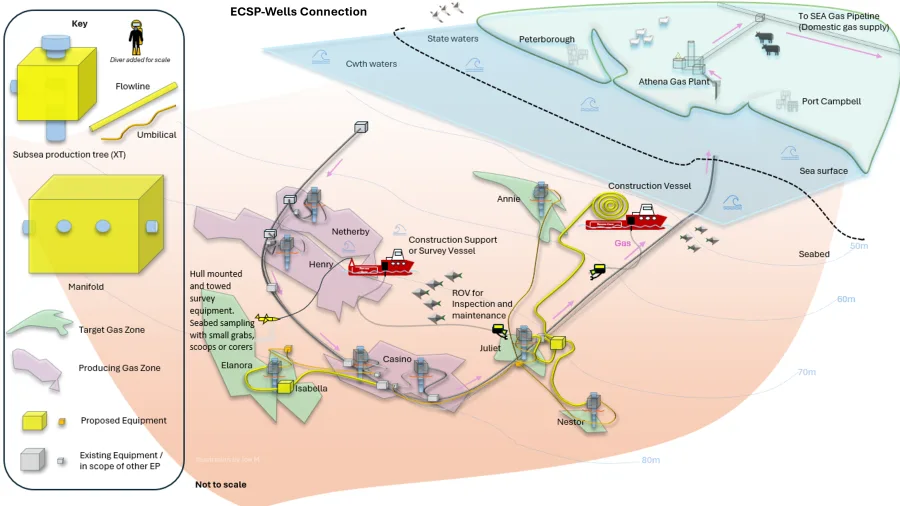
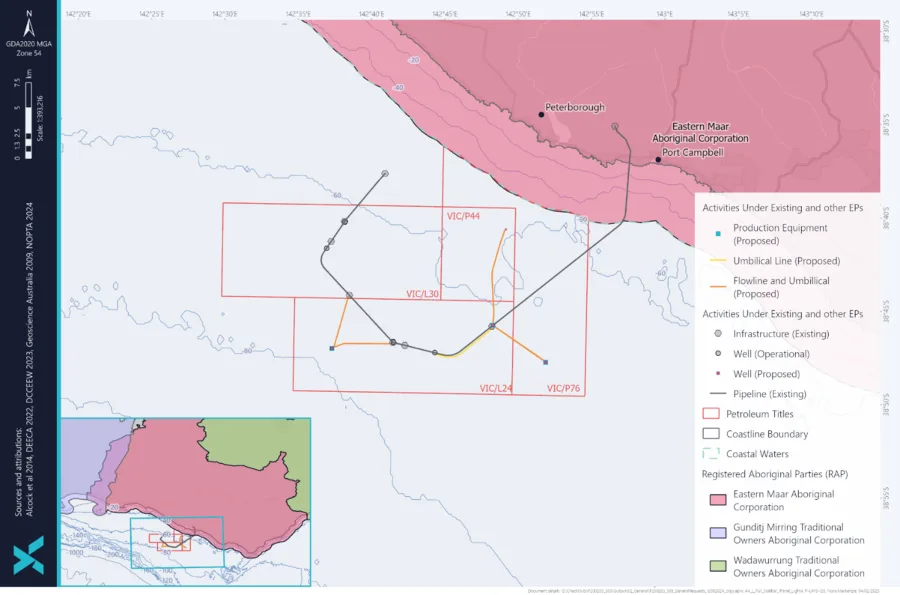
Have your say
We want to hear from relevant persons. Please use the contact form below to get in touch, and feel free to share this website link with any other relevant persons that you are aware of.
If you contact us via our webform:
We will consider any relevant matters raised during the development of our EP and respond to you.
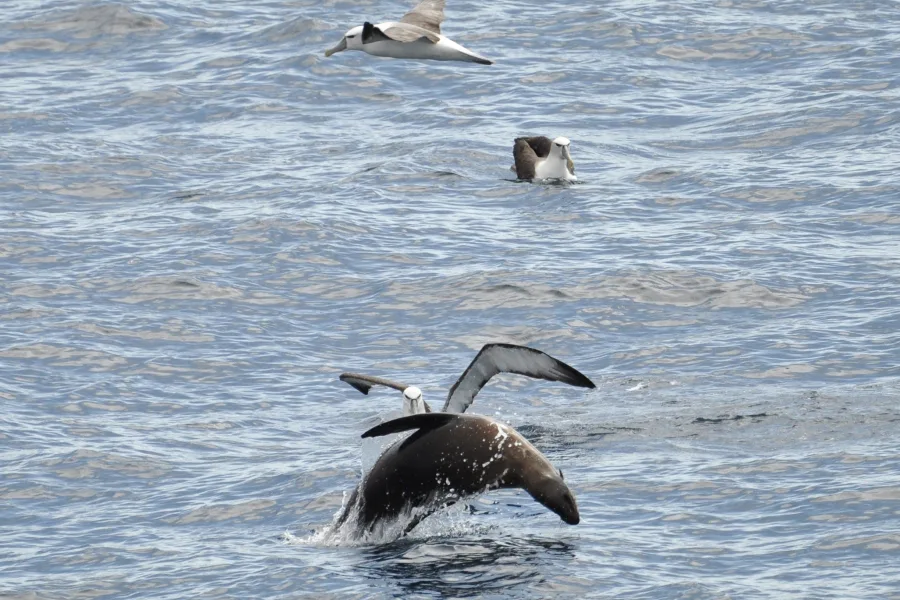
What next
We will submit our draft environment plan to the National Offshore Petroleum Safety and Environmental Management Authority (NOPSEMA) for assessment. If you have consulted with us as a relevant person, your input will be considered in improving our EP. Your name will be included in the "sensitive information" part of our plan and not published.
News
Introducing Amplitude Energy
With our new company name we launch a new identity and revised vision for our role in Australia’s energy transition. Domestic gas explorer, producer, employer, innovator.